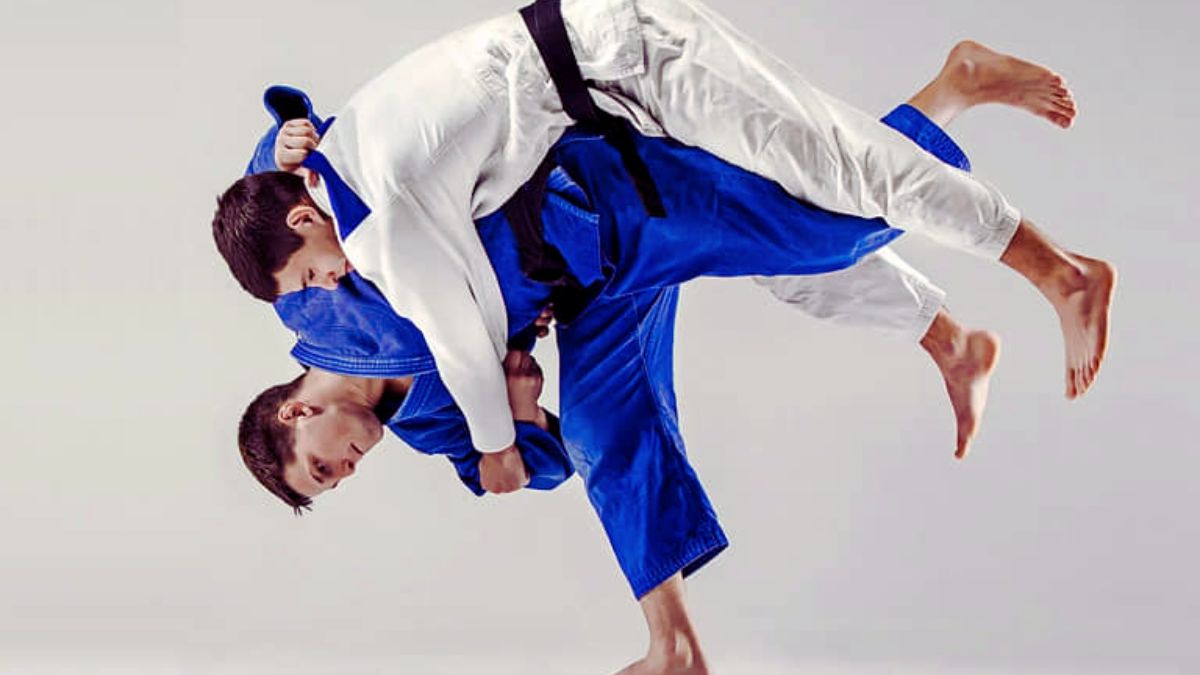Judo is a Japanese martial art that uses throwing and grappling techniques to overcome the opponent. Judo is played as a competition in which two participants (called judokas) compete against each other on a circular mat (called a “tatami”).
Also Read: History of Judo at the Asian Games
In contemporary times, Judo is often categorized as a modern martial art, yet it is also known as the “gentleman’s game.” Unlike many martial arts, where causing harm to your opponent is common, Judo emphasizes restraint. In Judo, even a single incorrect strike to your opponent results in an immediate declaration of defeat.
Here are the rules and regulations.
The rules of Judo are simple. The participant must knock their opponent to the ground or punch a joint to force them to surrender(defeat). The participant cannot not hurt his opponent; doing so will lead to his loss in the game, and the opponent will given victory.
- The match occurs on a circular mat called a tatami (4m x 14m or 10m x 10m).
- The two competitors must wear a judogi, which is a white uniform.
- The game begins with a bow to each other.
- Competitors can defeat their opponents through throws, joint locks, and chokes.
- The match ends when one competitor scores an ippon (highest score from the fighter).
In Judo, athletes, often called judokas, can win a match in a few ways. They can achieve “ippon,” which is an immediate victory. Alternatively, they can earn two “waza-ari” scores, which also results in an ippon and a win. If neither of these conditions is met, the athlete with more points wins at the end of the bout.
If the scores are tied when the bout ends, a “Golden Score” period comes into play. The first person to score points wins the match during this extra time. If the scores are still tied after this additional period, the referee and the two corner judges collectively decide the winner through a “Hantei” decision (two corner judges and referee decision).
Scoring
In judo, there are two kinds of penalties: “shido” for minor rule violations and “hansoku make” for major rule violations or accumulating four shidos. When someone commits a minor offence like stalling or extended periods of inaction, they receive a Shido penalty. The first time it happens, it’s a warning. The second time, it gives a score called “yuko” to the opponent. The third time results in a “waza-ari,” and the fourth time leads to an “ippon,” which ends the match.
On the other hand, if an athlete receives a “hansoku make,” their opponent automatically wins the match, and if it’s due to a significant rule violation rather than accumulating four shidos, the athlete may also be expelled from the tournament.
“Hansoku make” is a term used in judo to refer to a severe penalty or disqualification. It is imposed when a judoka (a judo practitioner) commits a major rule violation during a match. Hansoku results in an automatic loss for the judoka who committed the violation, which typically leads to their opponent being declared the winner of the game.
This penalty is reserved for severe infractions that significantly breach the rules and spirit of judo(hurting the opponent). Examples of actions that can result in a “hansoku make” penalty include dangerous or malicious behaviour that risks the opponent’s safety or grossly unsportsmanlike conduct.





